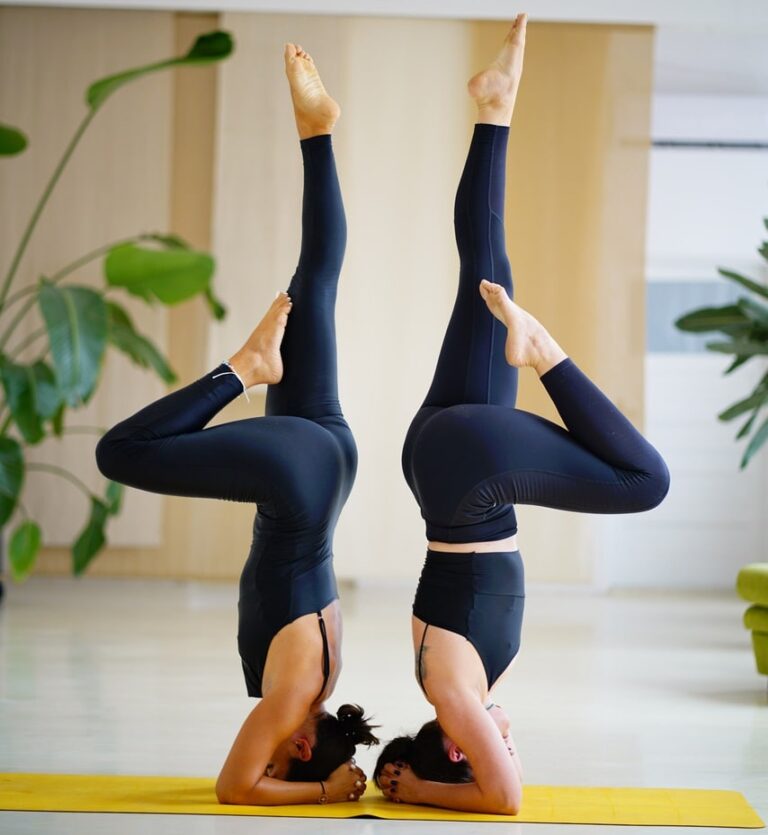It seems that you can read the “story” of every person from his posture. Because physical condition is an embodiment of mental state and “all fears, hopes, memories and dreams can be read in the structure and activity of our bodies.
Studies have shown that through prolonged yoga practices, from 3 to 6 months, the level of cortisol can be reduced and serotonin levels can be increased. And together with meditation and pranayama, 60% of patients improved their sleep, improving their digestive symptoms, have changed their mood and enjoyed quality social interactions.
The yogic approach behind depression is “knowledge that there is no separation.” In other words, Yoga starts not the question “What is wrong with me?” But with the question “What is good with me?” The extremes of all the emotions are brought into equilibrium by the practice.
It is clear that Yoga is not just a set of exercises that stretch and tonifies the muscles, but “yoga is the end of the mind’s disorders” (Yoga Sutra I.2). Yoga is a scientific therapeutic system, as Swami Rama, a Indian yoga guru, says when practiced carefully and with purpose, can change strongly and positively, the physical and emotional aspect of a person.
Depression is known for the decrease in motivation, and Yoga can offer a gentle and pleasant way of making a set of posts and a practice without judgment. For a person who suffers from depression, feelings like: lack of appreciation and self-accusation are most of the time a barrier to physical activity. At that time, it is hard to get out of bed, wash or eat, and the presence at a yoga course seems to be a unrealistic plan or an almost impossible approach.
But if you force yourself and mobilise you to get to the yoga studio, the sense of support of the community you find there is invaluable, helps recovery and prevent major recurrence of anxiety and depression symptoms.
Controlled movements, concentrated, breathing exercises, meditation, helps you clear your mind and strengthen the body-mind connection.
Yoga has an active role in healing, but that does not exclude the specialized recommendations of a psychotherapist, but together work to regain the freedom to be you, without anxieties and depression.
Although we usually use yoga to attract the mind inward, during depression and anxiety, the goal is to transform the people and their vision of the outside world.
Slowing down the avalanche of thoughts through breathing, yoga facilitates self-acceptance. In other words, by practicing yoga, we become quieter and more anchored.
How to Use Yoga as a Self Help Instrument for Depression and Anxiety
When you are on your yoga mat, you remember your wholeness, and with the practice you become free and liberated from everything outside and brings you back to your natural state.
When you learn for the first time a posture and move in it, you can not think about anything. To learn the posture, the mind must focus on the details of the alignment. Subsequently, when you are in position and let your mind absorb the sensations in the body, you are very far from daily worries.
From the first class of yoga, you can experience a new and unknown feeling of lightness and safety. Asana, Meditation, Pranayama helps you balancing emotions, with a better mood and managing more easily the anxiety and panic attacks. An important role also is played by the community, the energy and support you get even if they do not know what is happening inside you.
You gradually learn to live anchored in the present, eliminate past and future worries, and the mind is more calm than ever. In less than a month, changes occur in the rhythm, the lifestyle and the mood, and in the long run it becomes a proper tool to prevent other possible anxiety moments.
Yoga positions recommended in anxiety
“The body today is nothing but the accumulation of the past, emotions and thoughts,” says Gregor Maehle in the Book of Ashanga Yoga – Practice and Philosophy.
By practicing Yoga, we physically open different areas of the body, basically by passing neocortex, which is the thoughtful, conscious part of the brain and targeting the instinctual, subconscious parts of the brain, which are directly related to the body.
In Yoga it is known long ago that emotional releases can come from opening certain parts of the body. Yogis has experienced a significant emotional release from deep backends or hip opening. And the mere release of physical tension can alleviate the sensation of stress and anxiety.
Pranayama, especially Nadi Shodana and Bhramari, are powerful in preventing depression. Nadi Shodana balances the left and right side of the brain and also balances the chemical levels in the brain, especially cortisol and serotonin.
Nadi Shodhana Pranayama is also called alternative breathing on the nostrils and is usually used to purify and balance the two energetic channels, Yin and Yang, to get peace of mind of the body and mind.
Bhramari, used before bedtime, helps a better sleep and reduce insomnia. Bhramari Pranayama is one of the best breathing exercises to release the mental tension and stress.
Below some of the postures that help eliminate or diminish anxiety
Balasana
The child’s pose is considered in yoga, a form of rest, helps induce relaxation by encouraging stable and conscious breathing, with a calming effect in the nervous system. Therefore, its effects are helpful in improving the symptoms specific to anxiety.
The posture itself is effective in releasing the tensions of the neck and shoulders, body regions in which stress accumulate the most.
Vrksansana
The position of the tree brings body balance, improves concentration and alert status, in order to distract from anxious thoughts and redirect it to body sensations.
Viparita Karani
The semi-inclined position of this pose, combined with controlled breathing, leads to a slowdown in the body. This translates into slow heartbeats, which leads to relaxation and helps to improve anxiety, stress and insomnia.
Sirsasana
This position is more difficult to put into practice, but it offers important benefits in reducing the level of anxiety. Improves blood circulation in the body and directs attention to breathing and body sensations. The abundant blood flow that reaches the head determines the more efficient elimination of toxins in the adrenal glands. Personally, it is my favourite position, because it gives me an unexpected stability and self-confidence.











